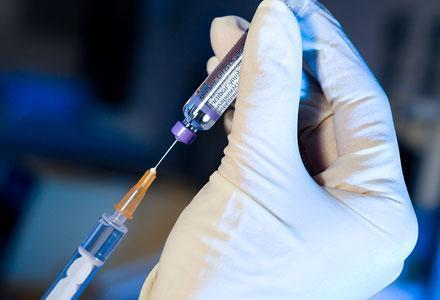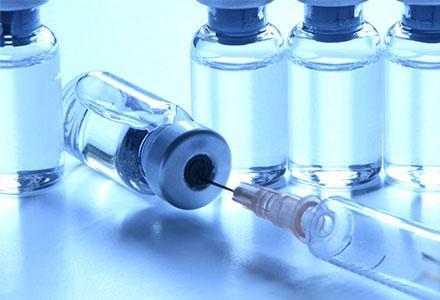Recent Blog Posts
Vaccine Injury Attorney
At Kraus Law Group, attorney Ed Kraus fights for compensation for people who have been injured by vaccines. We handle claims for all types of vaccines, including:
The National Vaccine Injury Compensation Program (VICP) was created by congress. This no-fault system provides compensation for lost wages, medical expenses, and pain and suffering, as long as your injury is determined to be caused by a vaccination you received.
GlaxoSmithKline vaccine linked to increased incidence of narcolepsy in children
Pandemrix, the H1N1 vaccine produced by GlaxoSmithKline, has been linked to an increased incidence of narcolepsy in children that received the vaccine. Narcolepsy is a chronic sleep disorder with symptoms including, daytime sleepiness, hallucinations, and cataplexy (sudden loss of muscle tone and inability to move triggered by strong emotion).
The vaccine, administered in 2009-2010, has been linked to more than eight hundred cases of narcolepsy in children. Studies in Finland and Britain found that children are 13-14 times more likely to suffer from narcolepsy after receiving the vaccine.
While studies regarding the cause of this increase are ongoing, it is likely that the vaccine’s adjuvant, AS03, a squalene-based adjuvant, plays a role. Some researchers believe that the increased effectiveness of AS03 in boosting an immune response could have increased an adverse immune response as well.
This raises concerns in the U.S. and around the world as this adjuvant is a component of other vaccines being administered and being considered outside of Europe. For instance, the FDA is considering another vaccine from GlaxoSmithKline that contains AS03 to be used in the event of an outbreak of the bird flu. In November 2012, an FDA advisory panel recommended approval of this H5N1 bird flu vaccine.
U.S. Supreme Court Confirms Award of Attorney’s Fees in Vaccine Injury Cases
 Last Monday, the U.S. Supreme Court unanimously confirmed that attorneys may recover fees and costs for a petition seeking compensation for a vaccine injury even if it is ultimately found to be untimely (filed past the 36 month statute of limitations). In Sebelius v. Cloer, the Supreme Court had to determine whether a finding that a petition was untimely was a bar to awarding attorney’s fees.
Last Monday, the U.S. Supreme Court unanimously confirmed that attorneys may recover fees and costs for a petition seeking compensation for a vaccine injury even if it is ultimately found to be untimely (filed past the 36 month statute of limitations). In Sebelius v. Cloer, the Supreme Court had to determine whether a finding that a petition was untimely was a bar to awarding attorney’s fees.
Under the National Childhood Vaccine Injury Act attorney’s may not seek payment from a client for filing a petition; instead the Act provides for payment of attorney’s fees and costs from the fund whether the claim was successful or unsuccessful so long as the petition was filed in good faith and there was a reasonable basis for the claim. In order to be timely the petition must be filed within 36 months of the date of the first symptom of such injury. 42 U.S.C. §300aa-16(a)(2).
The issue of timeliness is not jurisdictional in cases seeking compensation under the Act, and is often not determined until substantial time and resources have been spent. For instance, in Sebelius v. Cloer, Dr. Cloer received a vaccine in 1997; one month after the vaccine she started experiencing some tingling and numbness in one arm. The numbness gradually spread, but it wasn’t until 2003 that she was diagnosed with multiple sclerosis (MS). In 2004, Dr. Cloer learned of a link between MS and the vaccine she received. Dr. Cloer filed her petition for compensation for her vaccine injury in 2005. After reviewing the petition and the supporting documentation the Special Master determined that Dr. Cloer’s first symptom of MS was in 1997. Thus, the petition filed in 2005 was well beyond the 36 month limitations period.
Update: GlaxoSmithKline vaccine linked to increased incidence of narcolepsy in adults
 In March, we blogged about the increased incidence of narcolepsy in children and teenagers who received GlaxoSmithKline’s Pandemrix vaccine (a vaccine against H1N1). Studies across Europe noted the link between Pandemrix and the rates of narcolepsy in children. Now, Finland’s National Institute for Health and Welfare has found an increased incidence of narcolepsy in adults who received Pandemrix.
In March, we blogged about the increased incidence of narcolepsy in children and teenagers who received GlaxoSmithKline’s Pandemrix vaccine (a vaccine against H1N1). Studies across Europe noted the link between Pandemrix and the rates of narcolepsy in children. Now, Finland’s National Institute for Health and Welfare has found an increased incidence of narcolepsy in adults who received Pandemrix.
Hospital and primary care records in Finland reveal that adults aged 20-64 years old who received Pandemrix were 3-5 times more likely to develop narcolepsy than unvaccinated people. Studies in Sweden and France have also revealed an increased incidence of narcolepsy in adults vaccinated with Pandemrix. GlaxoSmithKline recognizes that an association has been demonstrated but states that there is insufficient evidence to show that Pandemrix is the cause of the increased incidence of narcolepsy.
GlaxoSmithKline’s Q-Pan H5N1 vaccine is still being considered for approval by the FDA. Q-Pan H5N1 contains AS03, an adjuvant that scientists suggested may be the culprit in Pandemrix causing the narcolepsy in children. Q-Pan H5N1 received support from the committee in November 2012. However, at the end of March, the FDA requested more time to respond.
What’s behind the uptick in cases of whooping cough?
 A quick survey of the news and media produces daily warnings that pertussis (whooping cough) is on the rise. These sources often blame low vaccination rates or under vaccination. However, that leaves out other important possible factors while stigmatizing parents that choose, for a variety of reasons, not to vaccinate their children.
A quick survey of the news and media produces daily warnings that pertussis (whooping cough) is on the rise. These sources often blame low vaccination rates or under vaccination. However, that leaves out other important possible factors while stigmatizing parents that choose, for a variety of reasons, not to vaccinate their children.
For instance, researchers have recently found vaccine-resistant strains of bordatella pertussis (the bacteria that causes whooping cough) in the U.S. Researchers analyzed 30 samples of bordatella pertussis specimens from children hospitalized in Philadelphia and found 60% were a variant resistant to the vaccine. The current pertussis vaccine relies on pertactin (a protein on the outer membrane of the bacteria) as an antigen. Meanwhile, the study revealed the pertussis bacteria has developed at least two variants that halt the production of pertactin. This means the immune system, which has developed immunity from the pertussis vaccine, does not recognize the mutated pertussis strain. French studies of pertactin-negative mutated strains have shown that such strains are just as infectious as non-mutated strains.






